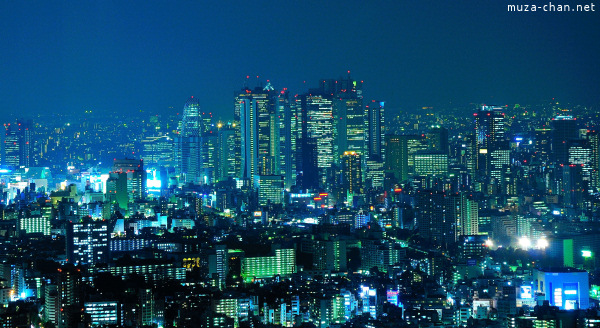If we compare the Tokyo’s tallest buildings with the skyscrapers from other countries, most probably they won’t impress much: the tallest building from Tokyo is only the 145th in the world, with a height of 248 meters, while the tallest building in the world is the Burj Khalifa, 828 meters. (update: not counting the 634 meters Tokyo Sky Tree, which is a tower, not a building).
However, the Japanese have the merit of having built skyscrapers in a country where strong earthquakes are frequent.
Shinjuku skyscrapers, view from Sunshine 60
Contrary to what most people believe, the skyscrapers are relatively new in the history of Japanese architecture. This was mainly because of a law that was forbidding the construction of buildings taller than 31 meters, law changed only in 1963.
The first modern skyscraper in Japan, the Kasumigaseki Building was finished in 1968 and it is 156 meters tall, twice the height of the tallest building until then, the New Otani Hotel.
Then, in the 70’s, the construction of tall buildings grew at a fast pace.
Here is the Top 10 of the tallest buildings in Tokyo:
Follow up:
10th place: Saint Luke’s Tower (221 meters)
Saint Luke’s Tower is actually a set of two different looking towers, located in Chuo-ku, on the shores of Sumida River.
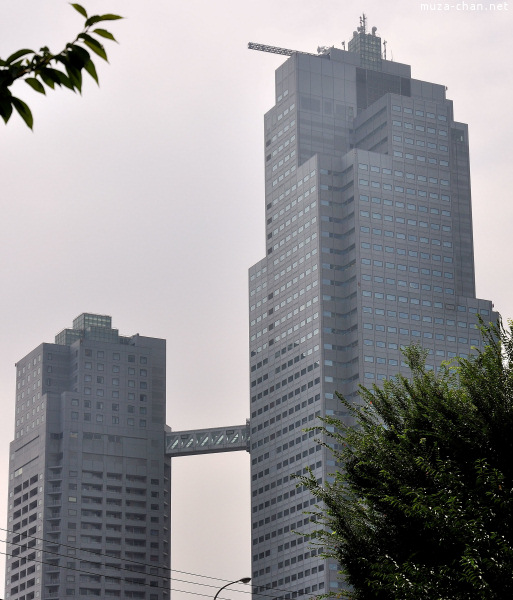
The two towers, one residential and one for offices are connected with a 24 meters long sky-bridge, located at the height of 110 meters. The sky-bridge is designed to resist to earthquakes and high winds and it can expand or contract up to 2 meters!
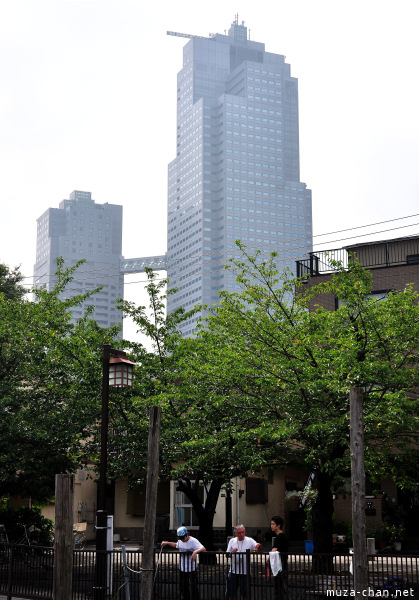
9th place: Shinjuku Center Building (223 meters)
When it was opened, in 1979, the Shinjuku Center Building was the second tallest building in Japan.
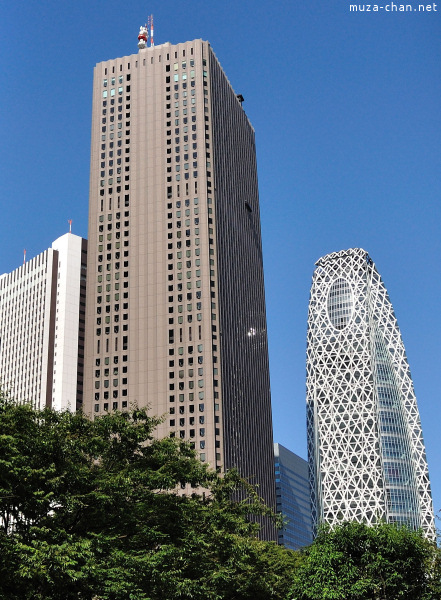
Sompo Japan Building, Shinjuku Center Building and Mode Gakuen Cocoon Tower
The building’s facade is undulated, an element of individuality but also with the role of dissipating the energy in case of earthquakes.
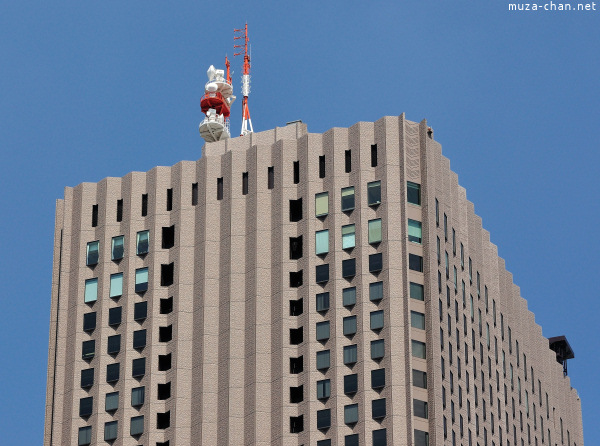
Apparently the surface of this building made it appealing for the free climber Alain Robert who, in 1998, climbed it in 40 minutes. Of course, he did this without permission, so when he reached the top was immediately arrested by the police waiting for him…
8th place: Shinjuku Mitsui Building (225 meters)
Between September 1974 and March 1978, Shinjuku Mitsui was not only the tallest building in Tokyo but also the tallest building in Japan.
It lost both places in 1978, in favor of the Sunshine 60 building from Ikebukuro.
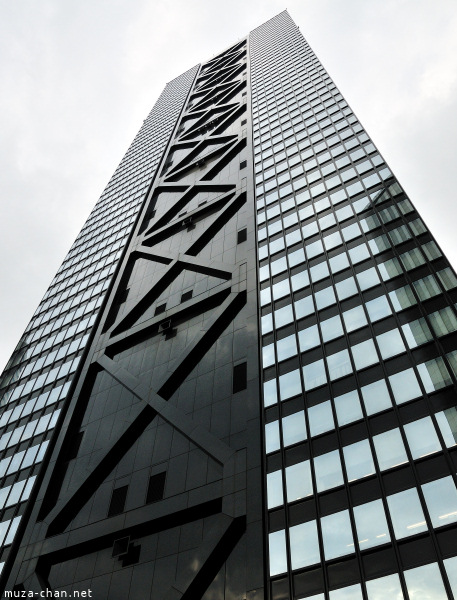
The dark and sober design, contrasting with the surrounding buildings, still draws attention…
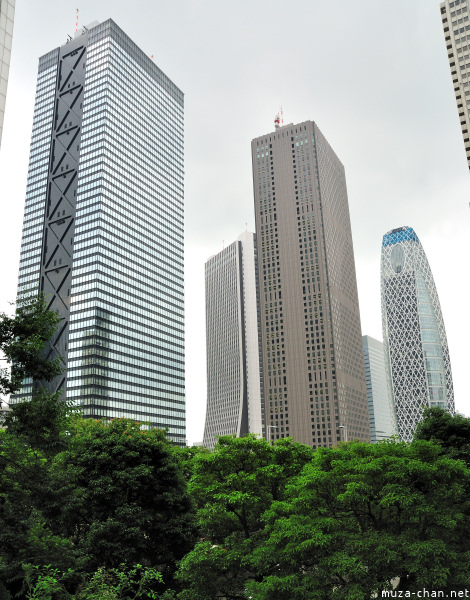
Shinjuku Mitsui Building, Sompo Japan Building, Shinjuku Center Building and Mode Gakuen Cocoon Tower
… and the X-shaped structures, 6 stories tall, give the building a distinct appearance.

7th place: Tokyo Opera City Tower (234 meters)
Tokyo Opera City Tower is currently the third tallest building in Shinjuku and it hosts the New National Theatre Tokyo. Inside the building there are three concert halls, museums, art galleries, restaurants and offices.
It has a distinct shape, octagonal with four sides shorter that the others and faced with glass. The intended effect was to look like the white sides have been peeled away to reveal the glass corners, emphasizing the sense of height and making the white facades seem thin and delicate like perforated paper…
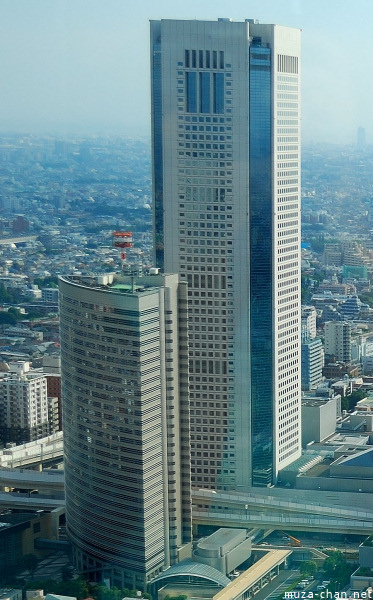
Tokyo Opera City Tower, view from Tokyo Metropolitan Building
6th place: Shinjuku Park Tower (235 meters)
Shinjuku Park Tower, opened in 1994, is the second tallest building in Shinjuku and it was designed by the famous architect Kenzo Tange, who also designed the tallest building in Shinjuku, Tokyo Metropolitan Building.
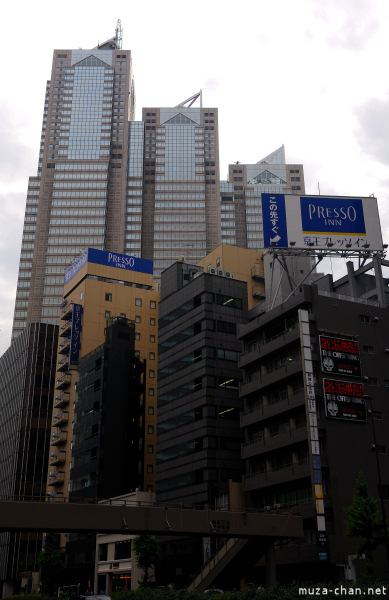
The building is a set of three towers of different heights (235 meters, 209 meters and 182 meters).

Shinjuku Park Tower is well known outside Japan because the floors 39 to 52 are occupied by the Park Hyatt Hotel, featured in the Lost In Translation movie, directed by Sofia Coppola.
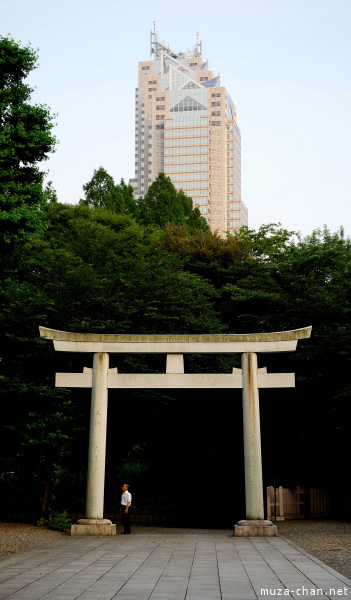
Shinjuku Park Tower, view from the Kumano Shrine
5th place: Mori Tower (238 meters)
Mori Tower is located in Roppongi, a definite landmark of the area. The building features two observatories opened to the public, one at the 52nd floor and another one right on the roof, opened on good weather days.
It is said that the lights around the center of the building mimic a graphic equalizer moving to the rhythm of music.

Mori Tower, view from Tokyo Metropolitan Building
This building is related to a very unfortunate event that took place in 2004, when a 6 years old child was killed by the revolving doors, because at the time, the motion safety sensors were set in a way that they didn’t detect anything lower than 80 centimeters.
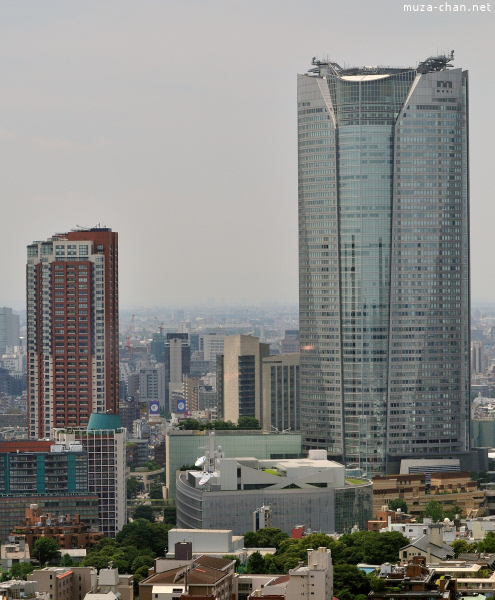
Mori Tower, view from Tokyo Tower
4th place: Sunshine 60 (240 meters)
Sunshine 60 is located in Ikebukuro and, when opened in 1978, it was the tallest building in East Asia. It was surpassed in East Asia in 1985, by the 63 Building in Seoul while in Japan by the Tokyo Metropolitan Government Building, in 1991.
Also at the time, Sunshine 60 held another record, the fastest elevators in the world (600 meters/minute).
At the 60th floor there is an observatory opened to the public.
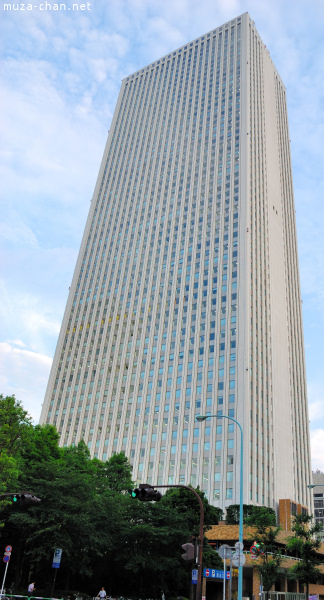
There are rumors that the Sunshine 60 building is haunted, because it was erected over the site where once was the Sugamo prison. The prison was famous because in 1948 was used to imprison and execute several high-ranking convicted war criminals, including the former Prime Minister Hideki Tojo.
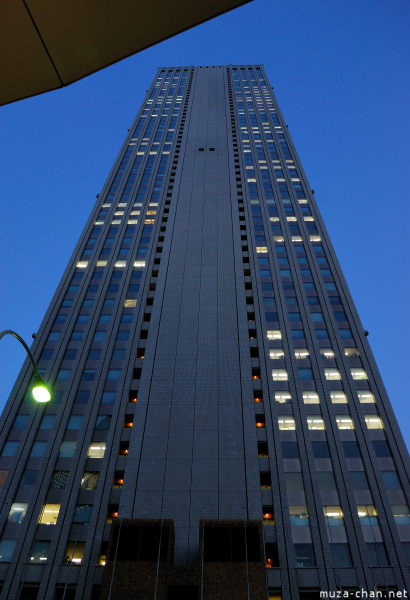
3rd place: NTT DoCoMo Yoyogi Building (240 meters)
NTT DoCoMo is the tallest clock tower in the world. The clock, 15 metres in diameter, was installed 2 years after the inauguration, in 2002, when NTT Docomo celebrated 10 years.
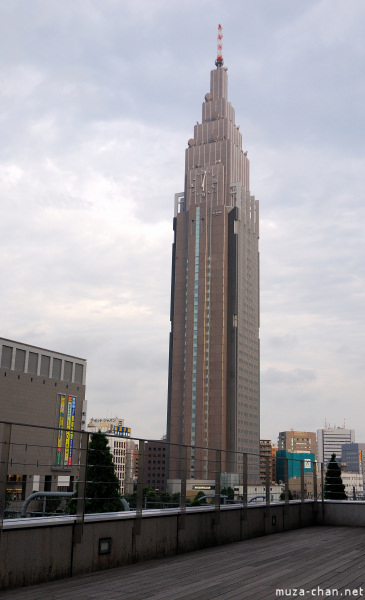
Part of the energy used by the building is solar energy, the waste water is recycled for reuse and rain water is used for the building’s toilets.
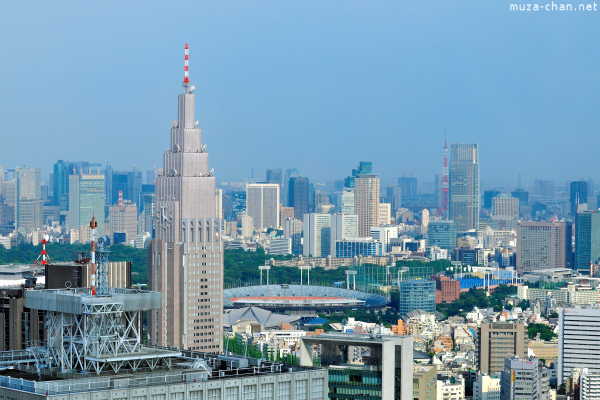
View from Tokyo Metropolitan Building. To the right we can see Tokyo Tower and Midtown Tower
2nd place: Tokyo Metropolitan Building (243 meters)
Tokyo Metropolitan Building was completed in 1991, designed by Kenzo Tange. The building costs were about 1 billion US dollars (157 billion yen at the time).
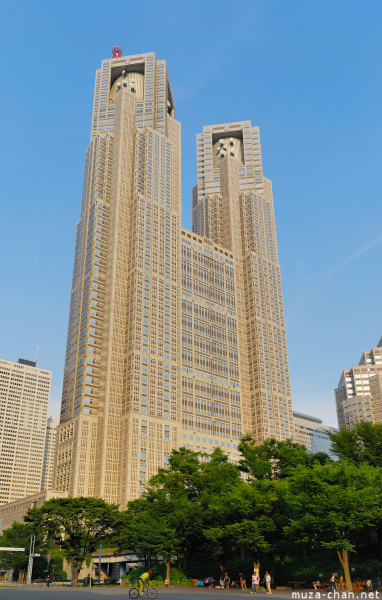
Since it was built of public money, the building received the nickname Tochō, “Tax Tower”
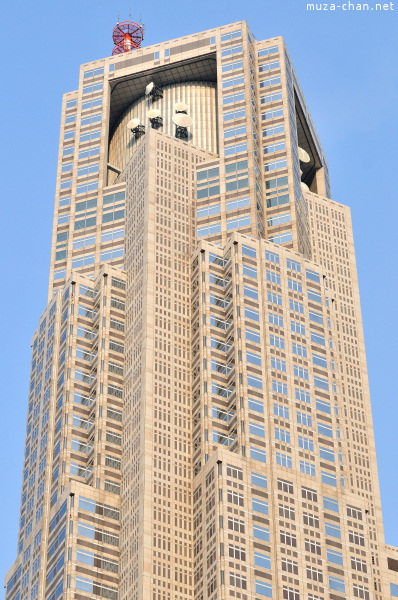
The design combines old and new: the granite, steel and glass facade was designed suggesting the computer microchips, while the shape of the two towers creates the look of a Gothic cathedral.
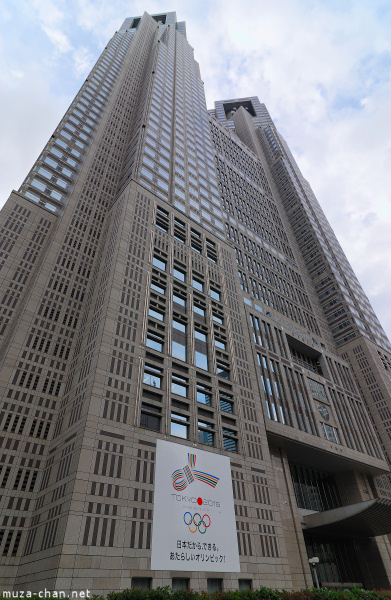
1st place: Midtown Tower (248 metri)
Midtown Tower was finished in 2007, is the newest building in this top and is also the 4th tallest building in Japan. Its name is derived from the Midtown district from New York.
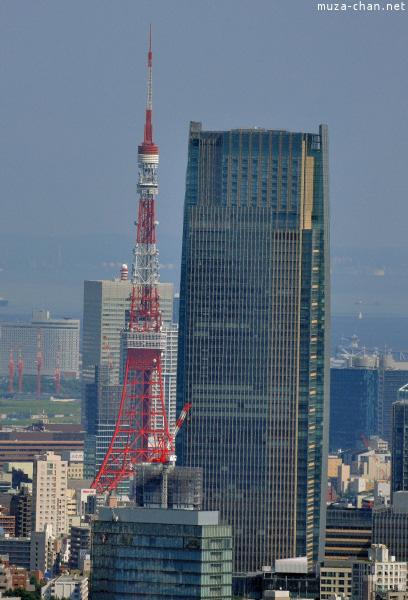
Midtown Tower, view from Tokyo Metropolitan Building
During the Edo Period, on this site was the residence of the Mori family. A wall from the Mori family villa is still used as a retaining wall.
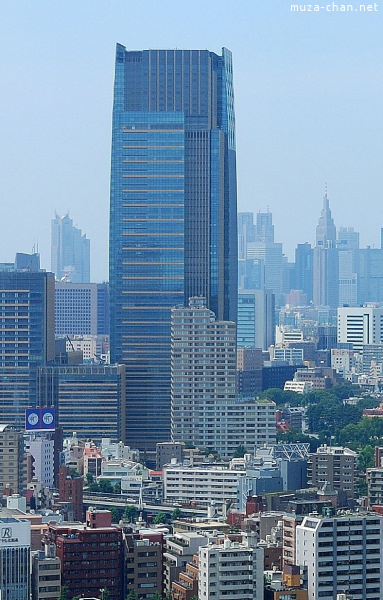
Midtown Tower, view from Tokyo Tower.
In the background, to the left we can see Shinjuku Park Tower and to the right Tokyo Metropolitan Building and NTT DoCoMo
